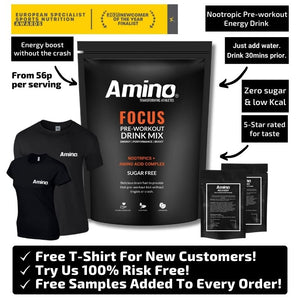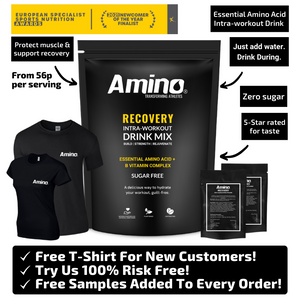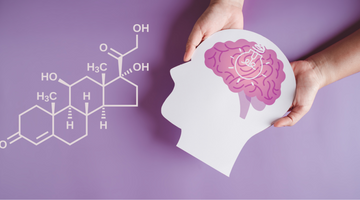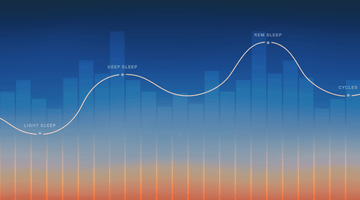Why is it important?Most people end up chronically sore, burnt out or injured after workouts because they do too much and don’t give their bodies time to recover between sessions, which means they don’t see the results they’re looking for. In this article, we explore the causes of post-exercise aches (DOMS) and what you can do about it.
|
Feeling sore after training is part and parcel of the improvement process. The inflammatory response and tissue damage that occurs as a result of exercise is critical to triggering the recovery response, which allows improvements to occur.
For some people, the pain of delayed-onset muscle soreness (DOMS) is part of the fun. They know that the effort they’re putting in is doing some good. But for most of us, we’d rather skip straight to the improvement part.
What causes muscles soreness?
Muscle soreness is caused by damage, which occurs on a micro-level during every training session. The amount of damage is dependent on the exercises you do, as well as the intensity and duration of the workout. Longer, more intense sessions tend to result in more damage, which means more soreness. The most recent evidence shows that duration plays a much larger role in soreness than intensity.
It’s important to note that certain exercises cause more soreness than others too. For example, eccentric-only training (lowering heavyweights) and plyometrics (jumping) are renowned for creating tissue soreness.
You also have to consider that soreness builds-up on a macro level from session to session over time. This is an important consideration when thinking about programming and whether your training will lead to results.
The key, as always, is to find your unique balance between too much and too little. If you don’t do enough training or high enough volumes, you won’t elicit a response and you won’t improve. However, if your programme is too intense or your workouts too frequent, you’ll be on a path to burnout and injury.
Supplements
We often get asked if amino acids help with muscle soreness. The simple answer is yes, they do play a role in supporting your body's free muscle mass and aid recovery. There is tons of science to support this but the evidence for reducing the perception of soreness is mixed.
The main reasons for this are that pain is subjective, while training loads and volumes are hard to measure because they’re not standardised. Your perception of pain – and a tough workout – may be wildly different from someone else’s.
As such, it’s good to use a supplement to support muscle mass and hormone function, but it may not reduce the feeling of soreness from training. This may lead you to believe that amino acids don’t work because you can’t feel a reduction in soreness, but the science shows the opposite. Just because you can’t feel it, doesn’t mean it's not effective.
It’s also worth noting that if your training volume or training load is too high, no amount of amino acids will reduce your DOMS; your program is the problem (more on this below).
If you're really suffering from soreness, here are some tips to help get you back on track.
Training Frequency
The main reason people end up chronically sore, burnt out or injured after workouts are that they do too much volume and aren’t giving their bodies enough time to recover between sessions.
The evidence on this is becoming clearer over time. Increased recovery time between sessions is a fundamental way to reduce DOMS and improve performance.
Yes, intense training will give you great results, but more intensity/volume can lead to more damage and fatigue, which means you need more time to recover in order to see improvements.
It’s a common mistake and we often have to remind athletes that the aim is to get marginally better from session to session. Most athletes train too intensively, or at high volumes, which means improvements may be hidden because their bodies don’t get a chance to adapt.
The best way to work around this is to cycle the body parts trained, or spread out heavy training sessions so you have 48 hours or more between intense bouts. This means you can train heavily every day, with a focus on different body parts
You should also manage your intensity, so you can perform recovery/mobility sessions on the days in between sessions. This will actually help speed up the recovery process; you just can’t go full gas on every body part every day. This is a common beginner’s mistake, but we see it in seasoned athletes too.
Change the root of the problem for a long-term fix. ‘Train hard and train smart’ should be your guiding mantra.
Sleep
Chronically sleep-deprived people will never achieve peak performance. All of our adaptations happen while we’re asleep and the research is clear on that point; you don’t heal if you don’t sleep. If your training has been on point but your sleep is lacking, you won’t get any benefits and it could actually work against you because your body won’t repair the damage.
Related: Sleep: It may help you build muscle and burn fat
Stretching & mobility
A daily stretching or mobility routine aids blood flow and healing and can help to reduce the sensation of pain. It will also help with posture and can also prevent injury.
Adding a 10-minute routine focusing on all the key muscles and joints can be beneficial. An easy way to get started is to start stretching from the floor, working your way up the body so nothing gets missed. There are lots of free mobility routines on YouTube; the key is to find one you like and stick with it.
Massage & soft-tissue therapy
Soft-tissue therapy or massage can help reduce the levels of pain and aid blood flow, improving recovery. Treatment from a massage therapist is expensive but very effective and worthwhile if your budget allows it.
Mobility balls and foam rollers are cheaper and can be just as beneficial but, similar to stretching, they need to be added to your routine and used consistently to really see the benefits. Again, a simple YouTube search can help you find the right method.
Nutrition
Your recovery process can be affected by what you eat and drink before, during and after your sessions.
Amino acids and protein are key to supporting your body's tissues and hormones.
Carbohydrate is also important for refuelling your short-term energy stores. The more intense your training sessions, the more carbohydrate you will potentially need to consume in order to work optimally. Doing very intense sprint / HIIT-type workouts on low-carb diets are a recipe for disaster. Intra-workout (during)= fueling should be a key focus.
Related: The best and worst foods for sore muscles
Ice baths
Ice baths have been shown to improve the speed of the recovery process by decreasing the inflammation and pain associated with heavy training. The cooling effect seems to switch on recovery signalling and aid beneficial hormone release in muscle tissues.
But use them sparingly.
The latest research shows they are great for promoting muscle recovery but tendons do not respond in the same way. Icing can actually increase tendon pain.
Usage should come down to personal preference, your sport and training methods and part of the season.
Compression
Compression garments are tight-fitting clothes that you can wear after training. They are designed to squeeze the body parts they surround. In some respects, they work in a similar way to ice baths. They reduce swelling, inflammation and can speed the recovery process after heavy training.
There are lots of companies that sell these products but the evidence to show their effectiveness is mixed. It comes down to testing and personal preference.
Leg elevations
This is the practice of raising your legs above your heart after training. The easiest way to do this is to lay on your back with your legs up against the wall. You should aim to do this for 5 minutes for every hour of training.
This helps to drain blood out of your working muscles and into the bloodstream, reducing blood pooling, helping to accelerate the recovery process.
Related: Secret Recovery Hacks to Performing at your Highest Level
The key takeaway from this article is that pain and DOMs are an individual and unique process depending on the training you do and how often you do it. Your focus should be on finding the sweet spot of not too much and not too little.
Remember: When starting out you will need less stimulus to get a result and you may need longer recovery periods between sessions. Although, as athletes get more experienced they can train harder and, as a result, will also need more recovery time.
Alongside optimising your regime, you need to support your body with nutrition, sleep and mobility at the correct times.
Stay consistent and you will hit all your goals. Now get to work!






